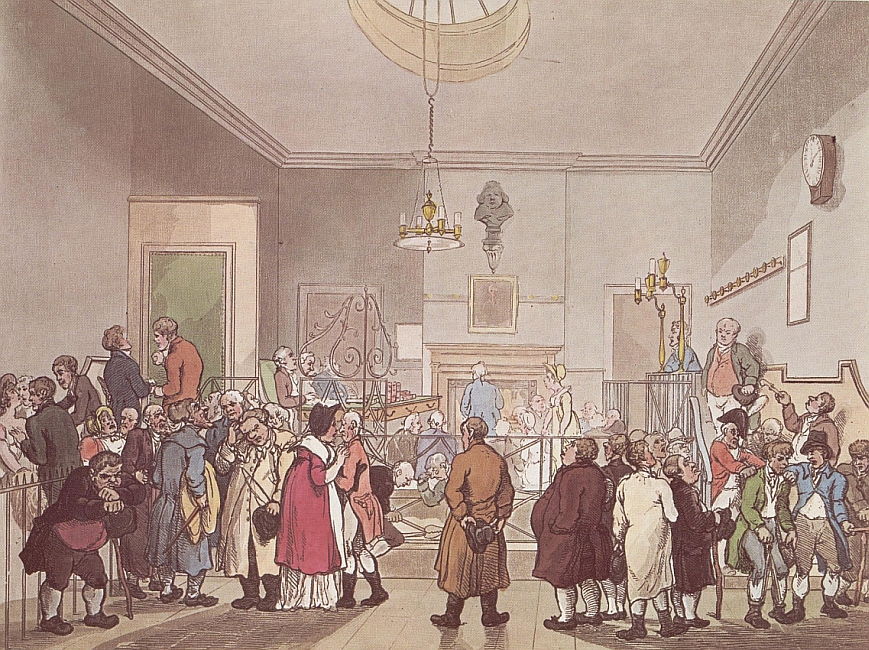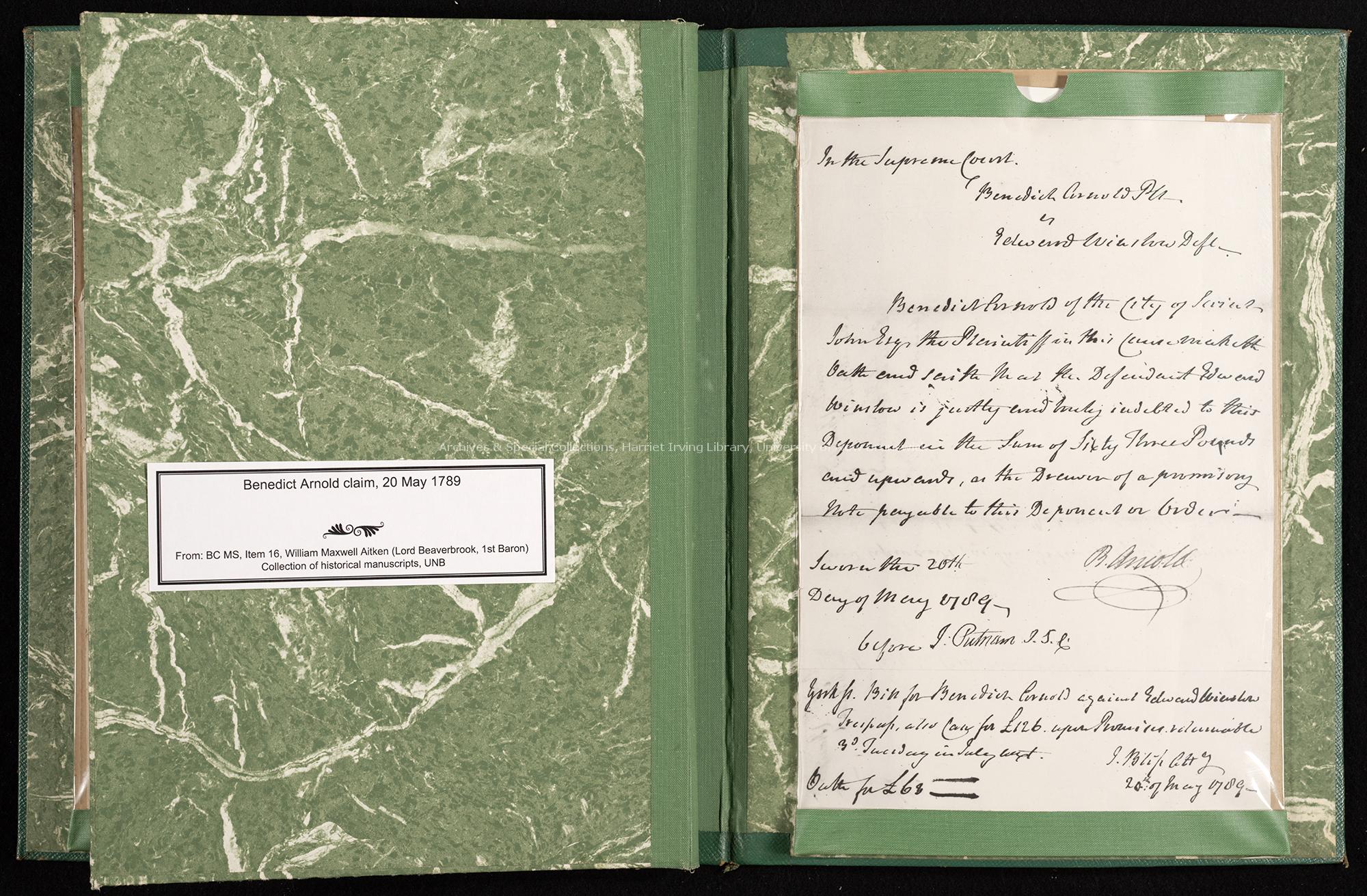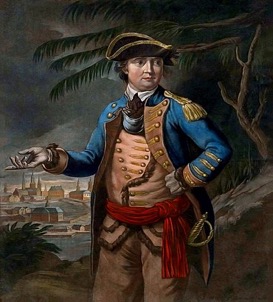A General’s Reprimand: Hospital mismanagement in Halifax, 1778
- Submitted on
- 0 comments
Newly promoted Brigadier General Francis MacLean could not have been pleased when he read the letter from Lord Barrington.
Atlantic Loyalist Connections shares research experiences involving The Loyalist Collection and relations within the British colonial Atlantic World.
Newly promoted Brigadier General Francis MacLean could not have been pleased when he read the letter from Lord Barrington.
Throughout the eighteenth century smallpox was sweeping the Americas and Europe, and in an attempt to reduce the number of deaths, physicians were practicing inoculation on those who were not ill in order to keep them from becoming sick with smallpox, much like today, when we receive vaccinations in order to avoid sickness.
Located on the Bay of Fundy in New Brunswick, Canada, Saint John (or Parrtown, historically) was the first English incorporated city in what would later become the Maritime Provinces in Atlantic Canada. However, Indigenous communities such as the Wolastoquey (Maliseet) and the Mi’kmaq have traditionally inhabited the Saint John River Valley, along with the Passamquoddy in the Bay of Fundy area, for centuries; long before the British and French empires established colonial settlements in New Brunswick.
One of the first motions recorded in the Journal of the House of Assembly of the Province of New Brunswick was that of Mr. James Campbell, a representative for the County of Charlotte, who moved to bring in a bill to regulate servants. Although this bill, proposed on January 24th, 1786, was rejected by the vast majority, the push for such law early in the history of the province reveals the desire to legitimize the institution of slavery in New Brunswick.
Nova Scotia was one of the thirteen colonies which remained in the British fold during the American Revolution. Within the province, there existed a stark divide in sentiment, in particular between urban and rural inhabitants. Halifax was the focal point of British support, but the out ports, communities like Liverpool, which were further removed from the influence of the capitol, were much more fluid in their opinions. Observers all along the coast of Nova Scotia were trying to make sense of this change in status quo, including a man named Simeon Perkins.
The following handwritten poems were unexpectedly found among the more predictable administrative documents of the Records of Shelburne County Court of General Quarter Sessions (originals held by the Nova Scotia Archives). They were penned in the town of Shelburne, Nova Scotia in the early 1830s and signed by Olivia Rosamond/ Rosomond Enslow.
Volunteers of Ireland
An entire regiment of soldiers of Irish Catholic origin fighting for the British Crown was quite an unusual situation in the British Atlantic World at the end of the eighteenth century, but two such a groups were created in the colonies of Pennsylvania and New York during the American Revolution. Irish Catholic participation in British military campaigns during this period is particularly intriguing for two reasons.
From where we left off with Zimri Armstrong, a Black Loyalist who fought for the British, after the war he had indentured himself for two years to Samuel Jarvis in hopes of gaining the freedom of his wife and family; however, Jarvis abruptly left Saint John to return to Stamford, Connecticut. Having received no provisions, “being almost naked,” once the two years were up, Armstrong appealed to a Mr.

For Women's History Month, we are happy to profile the lives of two New Brunswick women who made an impact in the worlds of literature and art.
A month or so ago, a reader of Atlantic Loyalist Connections commented on a blog entry I wrote about Benedict Arnold. In it, Nehemiah Beckwith (1756-1815) was identified as a shipbuilder who built the first sloop on the Saint John River fo
While conducting other research in The Loyalist Collection at the Harriet Irving Library, a collection titled “Indian Affairs: A Collection of Manuscripts: 1761 – 1864” from New Brunswick caught my eye. The first document on the reel was a Peace and Friendship Treaty signed between the “Jediack tribe of Indians” and the British government at Nova Scotia. I immediately had to know more.
Researchers using archives are often puzzled as to why we ask them to register, and leave all bags and coats in a locker before they may use the collection. It is because archives, libraries, and museums have been pillaged in the past of valuable collections, and the job of an archive is to protect these items, whether from the elements or thieves.
The words “muster roll” flow easily off the tongue of a military historian or veteran genealogist. Some researchers, however, may have some recollection of the term, but are unsure as to its exact nature.
At the head of Cape Sable, Nova Scotia, in 1831, the end came for seven sailors belonging to the brig Eclipse like many others employed in this potentially lethal occupation. The story of the crew of the Eclipse is just one of the dramas that is revealed through common, local county court documents. The primary documents assembled below demonstrate the very practical concerns surrounding shipwreck deaths and the treatment of its victims.

With open discussions about mental health and mental illness becoming much more prominent and accepted in contemporary culture, it is interesting to track the history of mental health care and responses to mental illness in Canada. In fact, for New Brunswickers, it can be surprising to discover that the roots of Canada’s mental health care can actually be found in our own back yard: loyalist Saint John County.

The Loyalist Collection at

In May of 1779, Benedict Arnold informed the British of a planned American invasion of Canada, and from then, his name became synonymous with the word “traitor”.